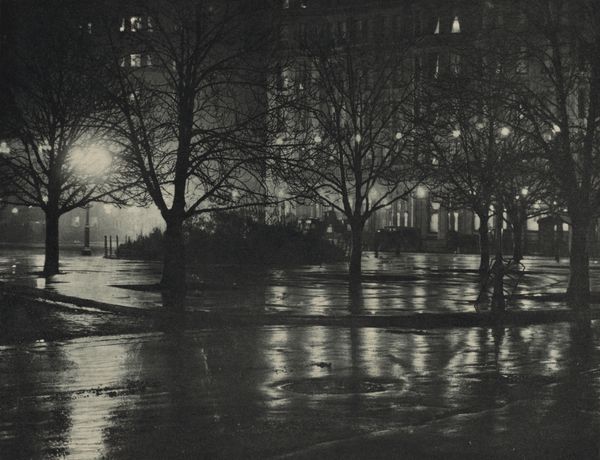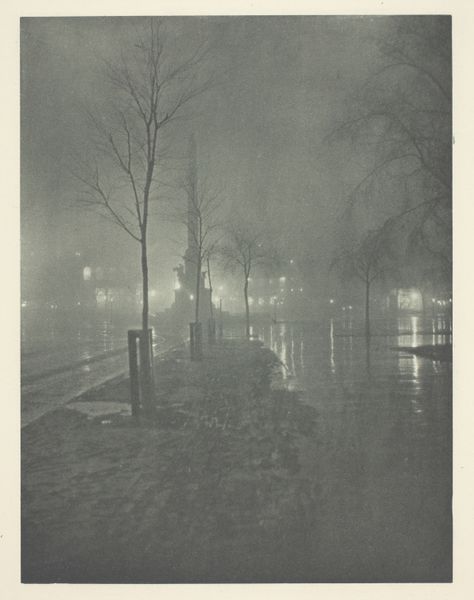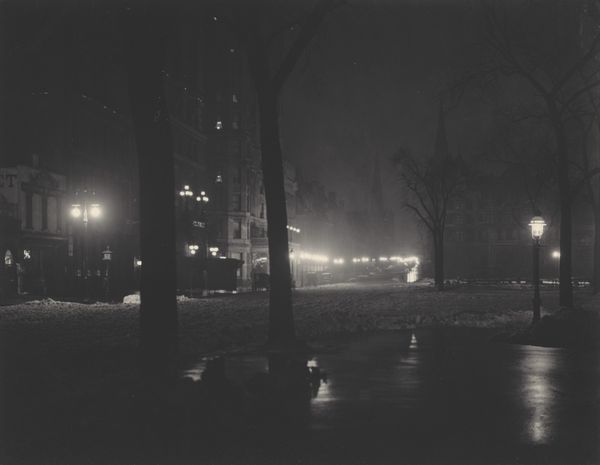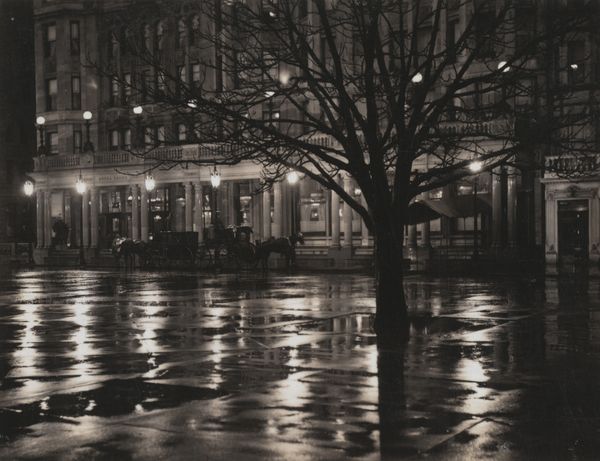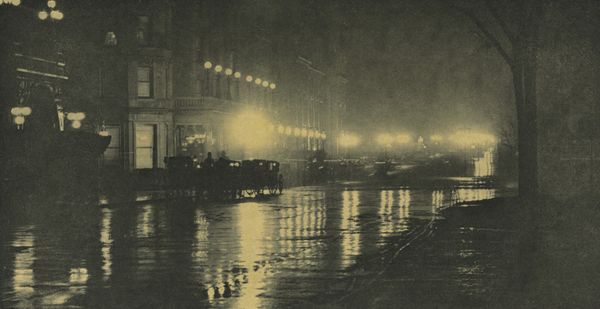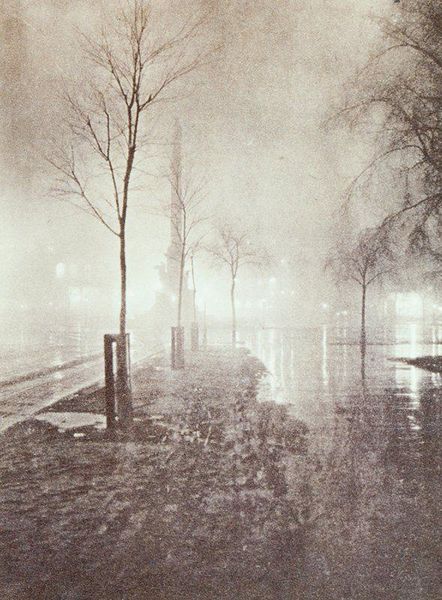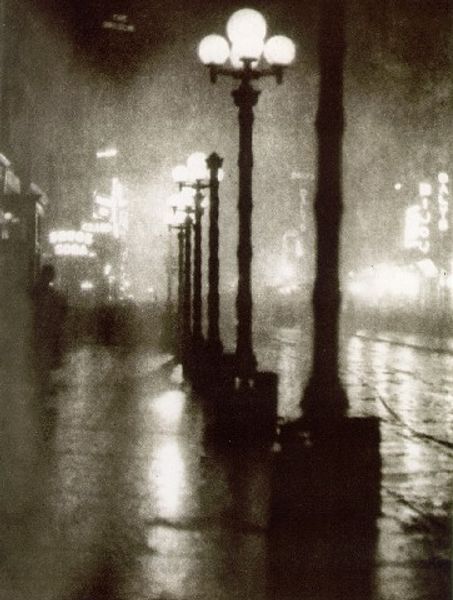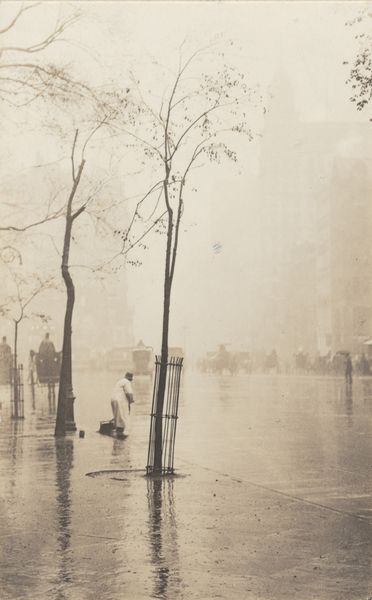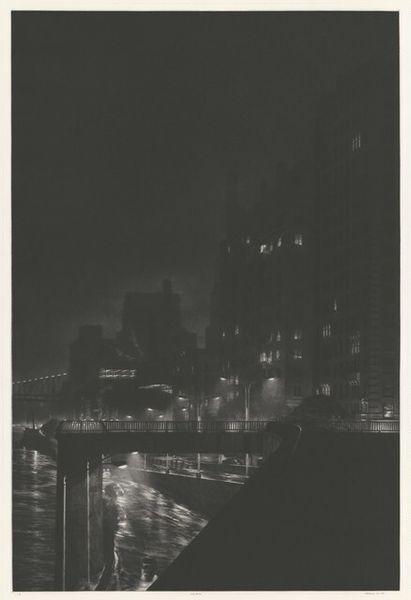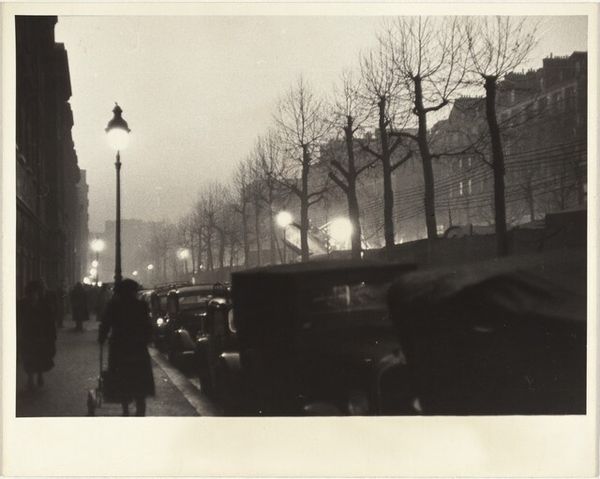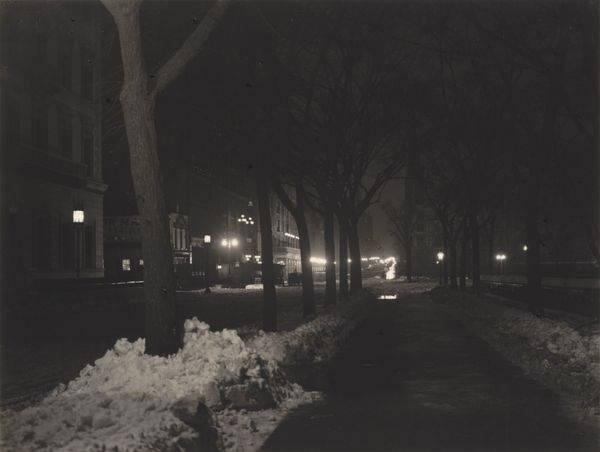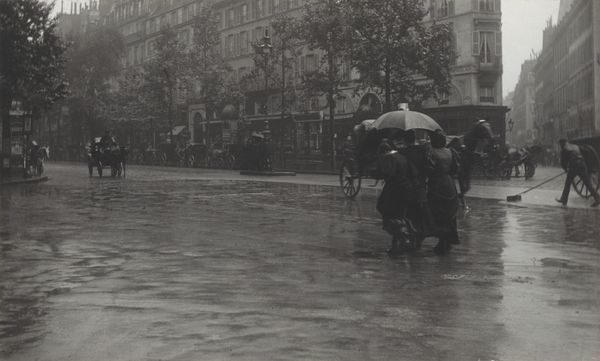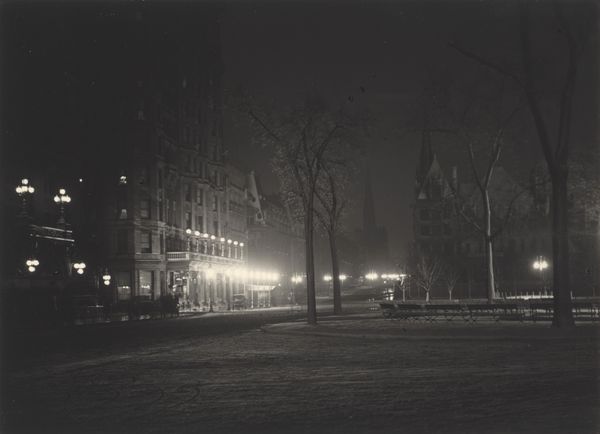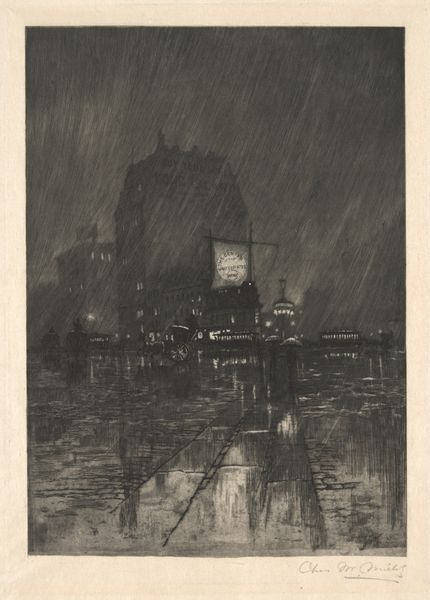
Dimensions: sheet (trimmed to image): 8.5 × 11.7 cm (3 3/8 × 4 5/8 in.) mount: 31.8 × 25.3 cm (12 1/2 × 9 15/16 in.)
Copyright: National Gallery of Art: CC0 1.0
Curator: This gelatin-silver print, entitled "Night, New York," is by Alfred Stieglitz. It's thought to have been made sometime between 1897 and 1934, capturing a nocturnal cityscape. Editor: My first impression is one of stillness, almost unsettling in its quiet. The street is slick with what looks like rain, reflecting the sparse, blurry lights. Curator: Stieglitz was deeply invested in elevating photography to the status of fine art. His work, particularly during this period, often sought to emulate the soft focus and atmospheric effects of Impressionist painting, reflecting a very pictorialist approach. Editor: And he uses those painterly effects to explore urban alienation. You know, the way the darkness almost consumes the city, even with those sparse electric lights dotting the scene? The absence of people feels pointed; what stories might this city hold after dark? Curator: Absolutely. Think about the socio-political context, too. This was a time of immense social change, rapid industrialization, and urbanization in New York. Stieglitz documented these transformations but through a lens that often softened their harsher realities. He was influential in defining modern photography, establishing galleries like the 291 to champion artistic photography. Editor: So the political message isn’t explicit but deeply embedded in the feeling of modern unease? Those shimmering lights on the wet street, they’re beautiful but also isolating, each a small beacon in a vast, dark space. Curator: Precisely. He’s playing with light and shadow to suggest, not dictate. This speaks to the larger debate at the time, too. He showed and promoted avant-garde art—Picasso, Matisse— in America alongside photographers he supported and defended. His political act was defining American modernism in ways that reflected a distinct, authentic artistic expression. Editor: I hadn’t thought about the way his aesthetic choices themselves push back against a purely documentary, objective view of the city. It allows for more questions to be raised around social issues through suggestion, allowing viewers to make inferences that engage with race, identity, and the hidden struggles. Curator: Stieglitz created a new avenue through photography to engage politically, changing not only our sense of what photography *could* be, but of what art *should* do. Editor: Seeing it now through that lens helps highlight its lasting power.
Comments
No comments
Be the first to comment and join the conversation on the ultimate creative platform.
